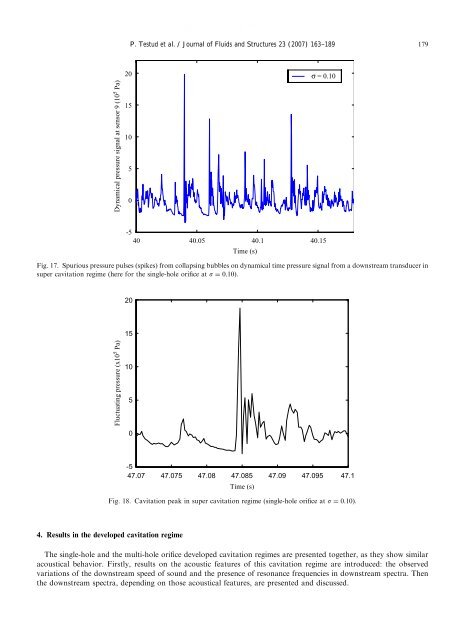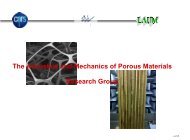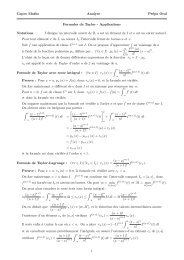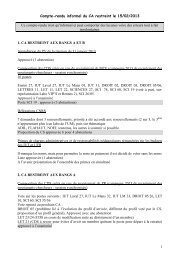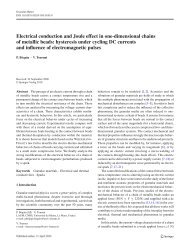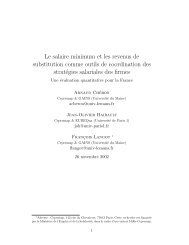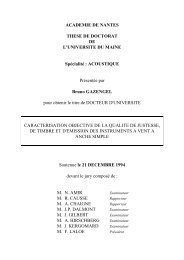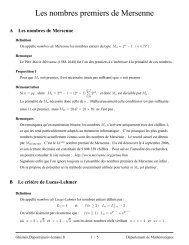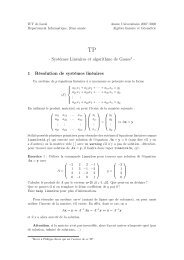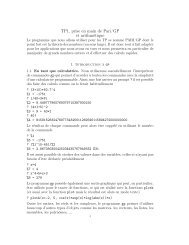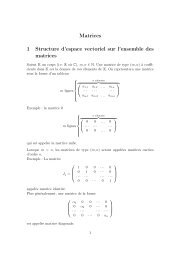Noise generated by cavitating single-hole and multi-hole orifices in ...
Noise generated by cavitating single-hole and multi-hole orifices in ...
Noise generated by cavitating single-hole and multi-hole orifices in ...
Create successful ePaper yourself
Turn your PDF publications into a flip-book with our unique Google optimized e-Paper software.
ARTICLE IN PRESSP. Testud et al. / Journal of Fluids <strong>and</strong> Structures 23 (2007) 163–189 179Dynamical pressure signal at sensor 9 (10 5 Pa)20151050σ = 0.10-540 40.05 40.1 40.15Time (s)Fig. 17. Spurious pressure pulses (spikes) from collaps<strong>in</strong>g bubbles on dynamical time pressure signal from a downstream transducer <strong>in</strong>super cavitation regime (here for the <strong>s<strong>in</strong>gle</strong>-<strong>hole</strong> orifice at s ¼ 0:10).2015Fluctuat<strong>in</strong>g pressure (x10 5 Pa)1050-547.07 47.075 47.08 47.085 47.09 47.095 47.1Time (s)Fig. 18. Cavitation peak <strong>in</strong> super cavitation regime (<strong>s<strong>in</strong>gle</strong>-<strong>hole</strong> orifice at s ¼ 0:10).4. Results <strong>in</strong> the developed cavitation regimeThe <strong>s<strong>in</strong>gle</strong>-<strong>hole</strong> <strong>and</strong> the <strong>multi</strong>-<strong>hole</strong> orifice developed cavitation regimes are presented together, as they show similaracoustical behavior. Firstly, results on the acoustic features of this cavitation regime are <strong>in</strong>troduced: the observedvariations of the downstream speed of sound <strong>and</strong> the presence of resonance frequencies <strong>in</strong> downstream spectra. Thenthe downstream spectra, depend<strong>in</strong>g on those acoustical features, are presented <strong>and</strong> discussed.


